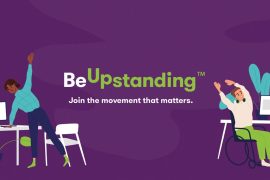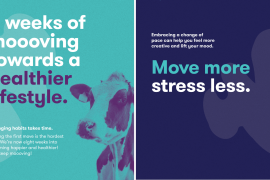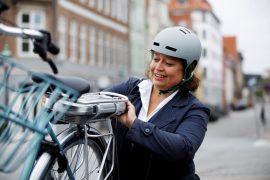Just take a minute to picture the environment of your workplace. What is the layout like? Are you required to get off your seat and walk to the printer located in a shared space, or do you scoot your seat to the end of the desk to retrieve that document? Are your colleagues or the partition in your line of vision? Is your workplace your home?
The environment has a key influence on behaviour – including our sedentary and physical activity behaviour. The role of the workplace environment on movement behaviour was examined in a recent study by Holmes and colleagues. Here, the associations between workplace characteristics and movement patterns were examined in a group of 271 desk-based workers in the USA. The participants were part of a broader study that was conducted between December 2017 and August 2022, so the findings cross-over the COVID-19 period. They examined both physical workplace characteristics, such as the placement of office equipment, stairs, elevators, and access to common areas, as well as social characteristics, such as face-to-face interactions and workplace socialising. The workplace characteristics were measured by questionnaire, while the movement patterns were measured by an activPAL – which is a device attached to the thigh that can accurately measure sitting, standing and movement time. Participants wore the monitor for seven days.

What was found?
The authors found that participants who worked in a public office (versus private) and in the office (rather than at home) had lower levels of sedentary behaviour and/or higher levels of physical activity. They also found that higher local connectivity – which explores how many pathways there are through different workspaces – and greater overall connectedness to also be associated with low levels of sedentary behaviour and/or higher levels of physical activity. Similarly, these positive behaviours were seen in those workers who had more face-to-face interactions, and greater visibility and proximity to their co-workers. The authors concluded that more public and open spaces with walkways that could help facilitate more social interactions could help reduce sedentary time and physical activity in the workplace.

But my office is at home!
The findings from this US based study suggested that those who worked from home were more sedentary and less physically active, with the authors recommending that tailored programs are needed for this group. BeUpstanding is such a program! Because the work teams choose the strategies that are best suited for their team, strategies can be tailored to be suitable for the home, hybrid, or work environment. BeUpstanding also has resources to help guide how to reduce sedentary time and increase movement while working from home.
So, next time you are working, have a look around. How is your environment influencing your movement? What modifications could you make to help reduce your prolonged sedentary time and move more, more regularly?
This blog article was written by Yew Weng Bryan Ou as part of his placement with the BeUpstanding team.
![]()










Comments are closed.